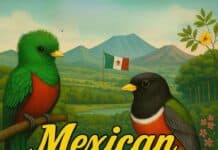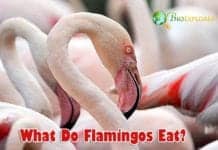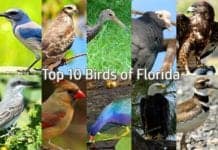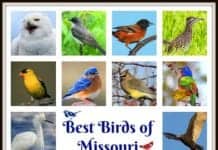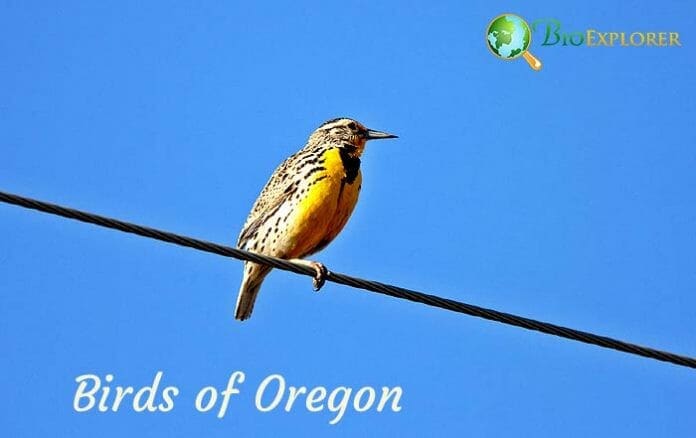
Birds of Oregon: Oregon is notable for its diverse habitats, including alpine meadows, rainforests, pine forests, marshes, estuaries, dunes, lakes and streams, deserts, and rocky headlands.
It comes as no surprise that a state with such diverse habitats will have a rich type of animal species. Focusing on birds, this state is home to a myriad of them.
Table of Contents
Birds of Oregon
The below section will cover some of the birds found in the state of Oregon, starting with the state bird.
1. The Western Meadowlark
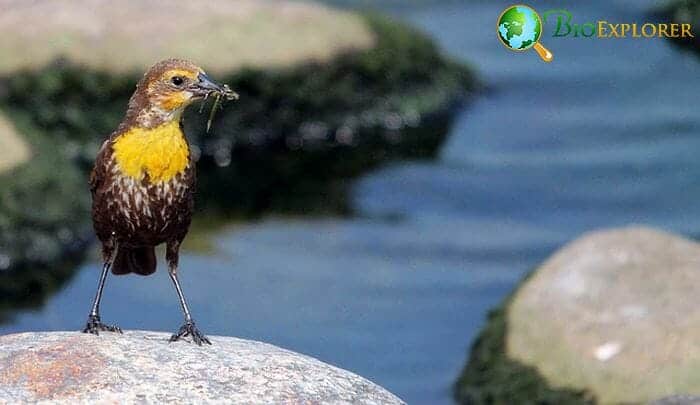
The Western Meadowlark is best described as a robin-sized bird with a yellow breast that also spots a distinctive black V-shape. This bird also has black and white stripes on its head and back with a yellow cheek.
| Animalia | Passeriformes | Icteridae | Sturnella | Sturnella neglecta |
- The Western Meadowlark was voted as Oregon State bird in 1927 by the school children in the state. The Oregon Audubon Society sponsored the poll.
- The Western Meadowlark’s breast feathers change depending on the season. Usually, the feathers on the breast tend to appear bright yellow with tan tips. However, in autumn, when the feathers are new, the breast area appears to have a light tan hue.
- During spring, the light tan on the breast feathers wears away, given that the feathers are a little older. As such, during this period, the bird tends to have a bright yellow breast.
- Interestingly, the Western Meadowlarks are not part of the Lark family, despite them having the word “lark” in their name. These birds are instead part of the blackbird family.
- The males and females of the Western Meadowlarks are similar in appearance. The main difference is the fact that the males are slightly brighter in color.
- This bird is that it is polygamous. About two-thirds or more of the population have two mates, with some having three.
![]()
2. Osprey
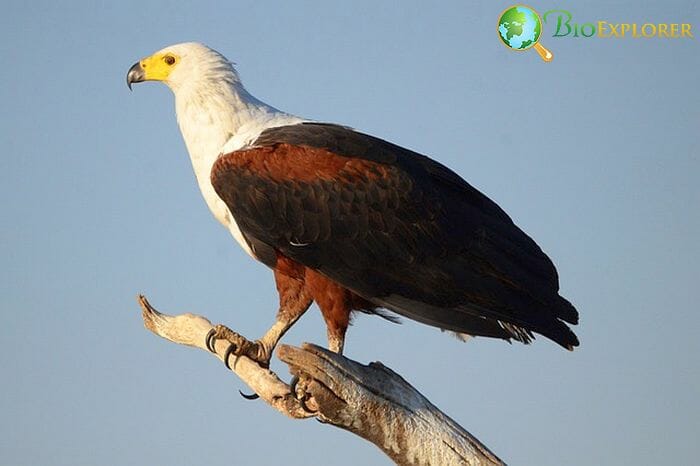
Often mistaken for the eagle, the ospreys have a distinct marking that separates them from eagles.
| Animalia | accipitriformes | Pandionidae | Pandion | Pandion haliaetus |
- These birds have white underbellies and a dark line that runs along with the eyes on their white faces.
- The ospreys migrat e to Oregon from April and stay in the state until late August, where they migrate to the south, particularly in Mexico. These birds have also been observed to migrate as far as Honduras.
- Ospreys mate throughout their lives and will always return to the same nest each year.
- In the summer of 2017, the Oregon State Legislator passed the osprey as the state’s raptor. In-flight, the ospreys can be observed to have distinct crooked wings. Additionally, the ospreys’ call includes loud whistles that are sharp.
- Further, the ospreys have a distinct odor, attributed to the heavy oil they secrete that maintains their plumage in a water-resistant state. Ospreys can live up to 25 years old in the wild, one of the longest for a bird.
![]()
3. Anna’s Hummingbird
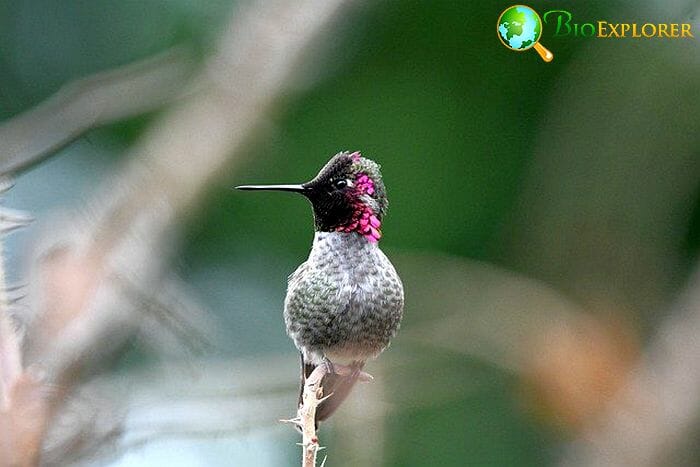
Anna’s Hummingbird is one of Oregon’s resident birds spotted all-year-round within the state.
| Animalia | Apodiformes | Trochilidae | Calypte | Calypte anna |
- This bird species is primarily grey and green, with males having pink neck and head feathers.
- Anna’s Hummingbird is a vocal hummer compared to the hummingbirds. The males produce a dry, scratchy buzz that can be heard all year round.
- The Anna’s Hummingbird is so tiny, and its egg is almost the size of a small jelly bean.
- Despite its size, the Hummingbird can also eat about 50% of its body weight in nectar every day.
- Additionally, in a routine flight, this bird’s wings can beat anything between 40-50 times a second.
![]()
4. American Goldfinch
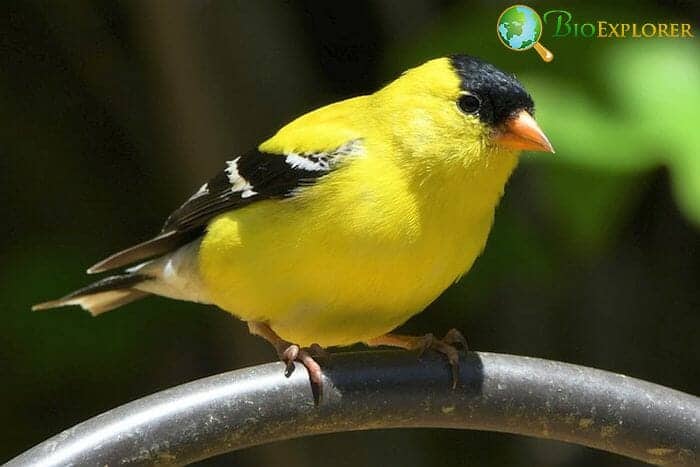
The American Goldfinch is a small bird with a short bill, a short tail, and relatively long wings. This bird’s color changes depending on the season.
| Animalia | Passeriformes | Fringillidae | Spinus | Spinus tristis |
- For example, during spring and summer, the American Goldfinch has a black heat, yellow body, and black and white tail and wings.
- During winter, the yellow plumage takes up a light brown tint.
- The American Goldfinch tends to have particular habitat requirements. For example, they require weedy fields and scattered wood growths for nesting.
- These songbirds nest later into the year because they will often wait for the thistle to appear first before making their nests.
- During winter, the American Goldfinch roosts with others in coniferous trees or burrow under the snow to keep warm.
- The American Goldfinches are known as the only ones in their family with the capacity to shed and sprout new feathers.
![]()
5. Dark-eyed Junco
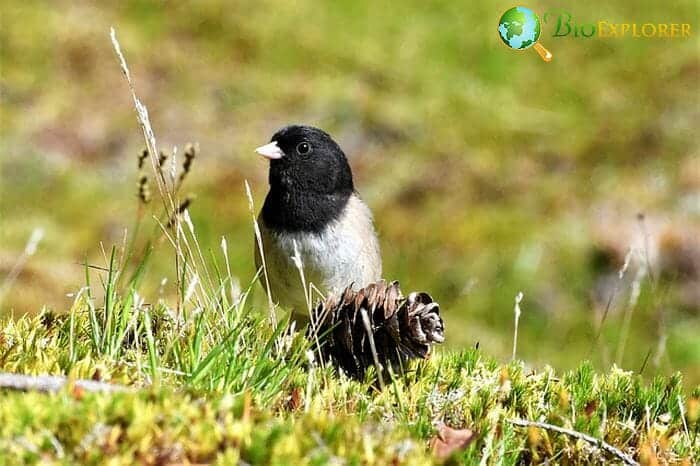
The dark-eyed junco is an abundant and widespread species resident in the state of Oregon. This species is classified under the New World sparrow family.
| Animalia | Passeriformes | Emberizidae | Junco | Junco hyemalis |
- The juncos vary in appearance but are primarily brown or dark grey birds with pink bills and white feathers on the lower chest and tail.
- The dark-eyed junco sub-species have different color variations that set them apart. These birds have a long lifespan, given that they can live for up to 11 years.
- Despite having wings, the dark-eyed juncos are often found hopping on the forest floor. These birds are ground feeders, preferring to eat millet.
- Finally, the dark-eyed juncos puff up during winter, which helps them retain warmth during the harsh cold season.
![]()
6. Northern Flicker
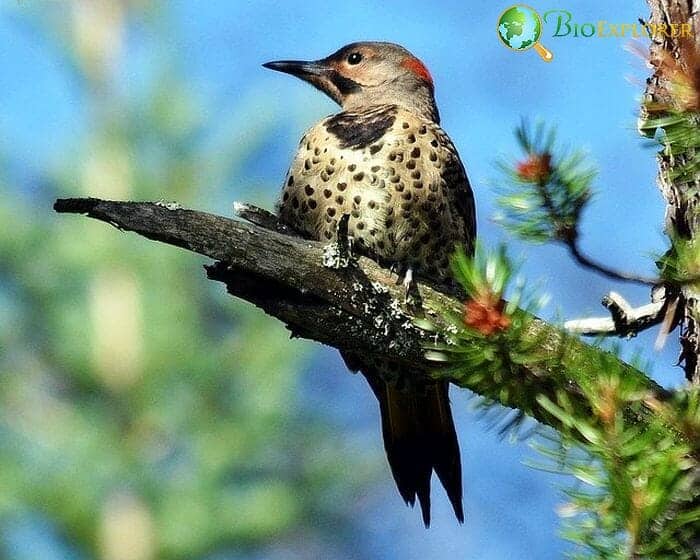
The Northern flicker in Oregon is larger than most woodpeckers in the region. The bird tends to be of a lighter shade of gray and brown, with black markings.
| Animalia | Piciformes | Picidae | Colaptes | Colaptes auratus |
- This bird can be found in virtually every terrestrial habitat in Oregon. The northern flicker lays its eggs on wood chips created when excavating their nests.
- Northern Flicker will commonly be found on the ground, where it searches for anthills to source for their favorite food.
- When hunting for insects, these birds tend to look out for or listen to insect movements.
- During breeding, this bord forages in different habitats.
![]()
7. Brown Pelican
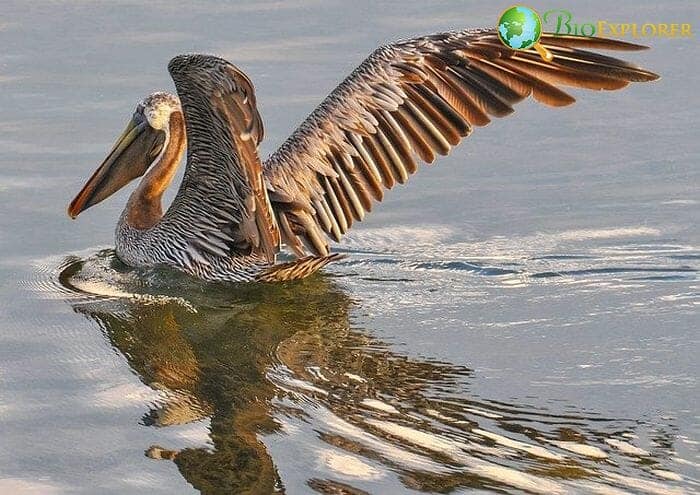
The Brown Pelican is one of the two pelican species found in Oregon. This bird is well known because of its brown plumage.
| Animalia | Pelecaniformes | Pelecanidae | Pelecanus | Pelecanus occidentalis |
- The brown pelicans have a distinctive pouch, which comes in handy for them during their hunting quests.
- Brown pelicans are great divers and can spot prey and dive into the water from 9 meters to capture it.
- The brown pelicans are, however, not deep divers. This is because they have a great system of subcutaneous air sacs that affords them buoyancy in water.
![]()
8. American Pelican
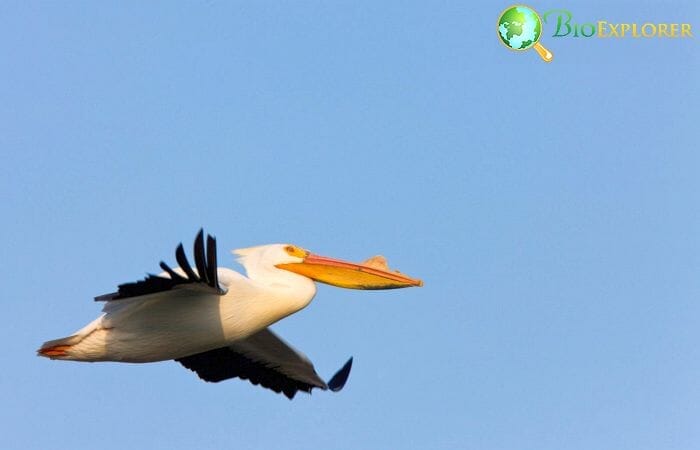
The American White Pelican is a predominantly large white bird. The American white Pelican has the longest wingspan of any Oregon bird.
| Animalia | Pelecaniformes | Pelecanidae | Pelecanus | Pelecanus erythrorhynchos |
- American Pelican has a large orange bill and tends to fly with its neck withdrawn.
- The top of this bird’s head gets a black hue during the breeding season, and a horn emerges on the upper mandible.
- This projection helps protect the bill pouch during aggressive encounters. The horn sheds following the completion of the egg-laying phase.
![]()
9. Bonaparte’s Gull
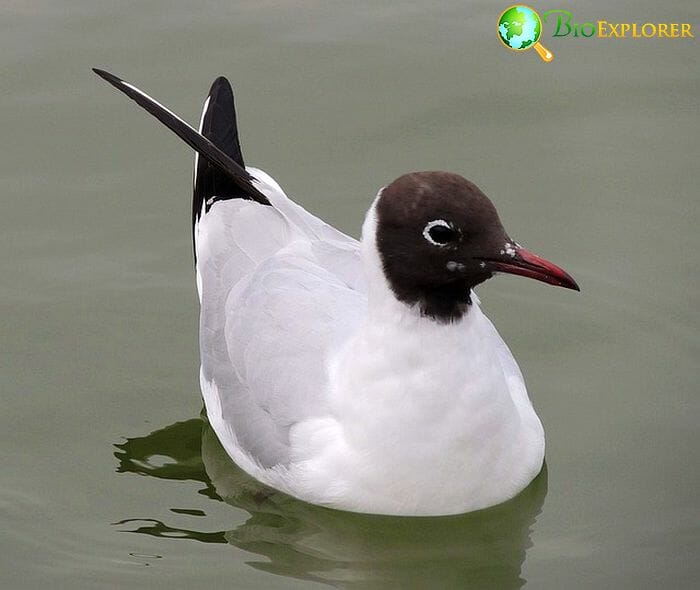
The Bonaparte’s gull is widespread in Oregon, often found in flocks of 100 members.
| Animalia | Charadriiformes | Laridae | Chroicocephalus | Chroicocephalus philadelphia |
- The Bonaparte’s gull will only breed near water in a boreal forest. Additionally, this is the only gull that tends to make a stick nest in their preferred trees.
- Further, there is a difference in appearance between the breeding and non-breeding members of this species.
- Breeding adults mainly possess a blackhead, thin white eye arcs, and bright red legs, while their non-breeding counterparts tend to have white heads with black ear spots and pinkish legs.
![]()
10. Black Tern
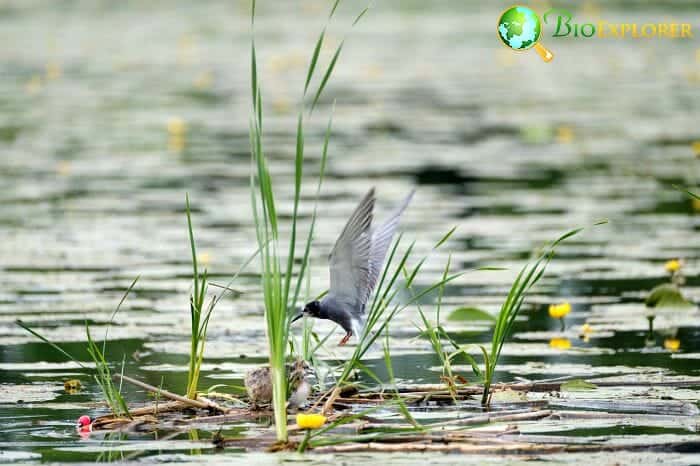
The black tern is Oregon state’s smallest breeding tern, notable because of its black body, head, and gray-colored wings.
| Animalia | Charadriiformes | Laridae | Chlidonias | Chlidonias niger |
- These birds fly gracefully with their pointed wings. This bird is very social; it breeds, forages, and migrates in colonies.
- Adult males give a flight performance given females to appear attractive to them.
- This is an essential strategy that allows Black terns to find a mating partner.
![]()
Evidently, Oregon’s diverse habitats are a testament to the many bird species that call this state home. The best part is that even if one cannot go to designated locations to watch the state’s different bird species,
Oregon residents can still catch a glimpse of many other species resting or flying in their backyards or within the neighborhood.
![]()


